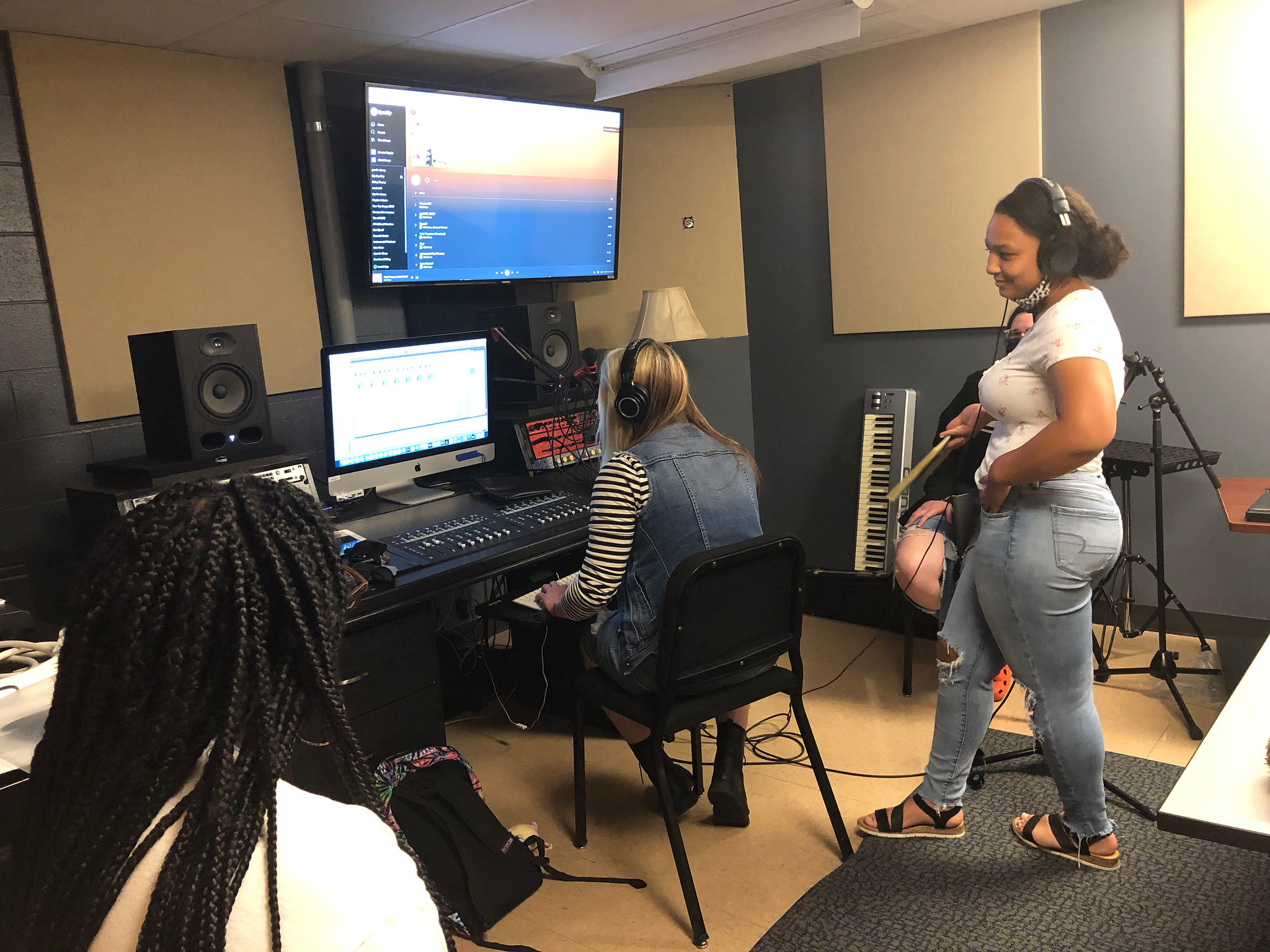Inaugural Hip Hop Time Capsule Program Was This Summer’s Greatest Hit
This summer, Chesapeake Heartland’s Hip Hop Time Capsule paired Kent County teenagers and Washington College students with musicians, college professors, and museum professionals to research, explore, document, and interpret the rich history of African American music in Kent County, Md.

Olivia Rodrigo’s “Good 4 U” may have been officially crowned 2021’s “Song of the Summer”, but right here in Kent County, 16 students total - 10 local high school students, five Washington College students and one Chesapeake College student – were cranking out tracks and beats that rivaled every one of the season’s biggest hits.
Hip Hop Time Capsule – a month-long innovative collaboration between high school and college students in Kent County, MD and musicians, college professors, and museum professionals – challenged students to create original music and album covers from samples they pulled from the Chesapeake Heartland digital archive.
Using these digitized clips to create a beat, the student interns then developed their own lyrics or spoken word pieces like poems and layered those on top. The goal was to create two or three original songs, along with artwork for the album cover. Student’s final songs were added to the Summer ’21 Mixtape, the final “best-of” album that was dropped at the conclusion of the program.
By digging into the oral histories documented in Chesapeake Heartland’s digital archive – many of which were recorded by Washington College students – the Hip Hop Time Capsule interns were building on Kent County’s rich history even as they crafted their own unique sounds and styles.
“We have clips in the archive that range from things as heavy as experiences with segregation and racism, to things as light as recipes for white potato pie,” said Kacey Stewart, Assistant Director for Programs and Experiential Learning for the Starr Center. “We want to show the history in its full scope and give the full story, good and bad. The clips that students worked with spanned that full range.
“For example, we found a clip from a gospel song – ‘I can depend on God’ – and that one clip was repeated over and over to form a hip-hop beat.” For another song, two students paired up to create an original song titled “Flying with Clipped Wings”, which incorporated a choir repeating “until I die”, and was interpreted into a record that explains the importance of social justice and protest.
In other songs, students used a snippet of an oral history, with the subject reminiscing or saying something powerful. That oral history now becomes part of the music. In this way, students weren’t just learning about African American history in Kent County, they were actually contributing to it.
“They’re recontextualizing the past in thinking about the future,” said Stewart.
Over the course of the program, students were inspired by visits and sessions with local and nationally-renowned professionals and award-winning recording artists, like Karen Somerville, Dom Flemons, Marlon Saunders, Yvng Swag, and Robert Earl Price just to name a few. The interns developed their own musical personas through which they channeled their work.
Kentavius Jones, a Washington College alum and an acclaimed singer/songwriter who hails from the Eastern Shore, served as Musical Director for the Hip Hop Time Capsule program. Getting involved was a natural fit for Jones, who has settled in a role as a music educator and community volunteer after years working as a full-time solo artist. “The kids really developed some amazing themes – resiliency, freedom, perseverance, family, community, legacy – that’s been the real scope and arc of the work,” he said.
For their part, the students largely found this program to be incredibly eye-opening. The recorded Mixtape in fact captures their thoughts about what they learned (found under Kent County History – Reflections Hotline), saying, “I’ve come to value Kent County a lot more, knowing its history and what took place here, and right across the street from me.” Another student reflected on the richness of what was learned, saying, “I feel like after coming here, it’s a lot deeper than what I thought it was. I realized that there’s a lot more history than what I was seeing.”
Another student reflected on her biggest takeaway, which is that history is not portrayed as it actually was. “And there’s so much that’s lost,” she said. “But if you really took the time to ask people, they all had so many interesting stories to share. So many stories are lost, and that’s our fault because we weren’t recording it.”
This innovative learning program is part of a larger effort to document the community’s Black history, in collaboration with the Smithsonian’s National Museum of African American History and Culture, that has drawn over $1 million in grant funding from the Mellon Foundation, the state of Maryland, and others. The program spanned five weeks and all student interns were paid for their time. This was the first run for what promises to be a regular summer program in Chestertown.